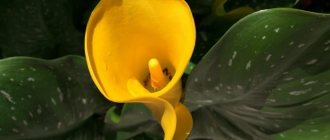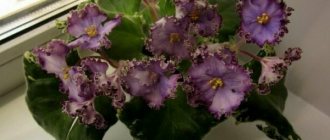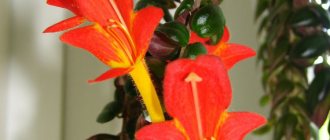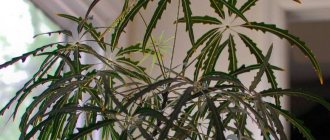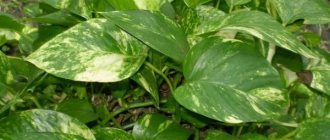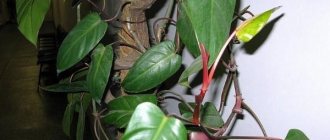What does a garden chamomile look like?
Garden chamomile, or cornflower, has a thin but strong stem 30-100 cm high with bipinnate dark olive leaves. The top is decorated with large inflorescences up to 15 cm in diameter, which are collected from flowers without reeds and reeds in white and yellow shades.
Garden chamomile
In the center of the flower there is a yellow core. The petals are large, arranged in 1-2 rows. In terry varieties, the petals are arranged in several rows. After flowering, small fruits with cylindrical seeds up to 2 mm in size appear in the center of the plant.
Which family does it belong to?
Garden chamomile is a perennial or annual plant of the Asteraceae or Compositae family. Thanks to the work of breeders, a large number of varieties have been developed that differ in flower size and color, bush height, and frost resistance.
Briefly about the history of appearance
America is considered the birthplace of chamomile. It was discovered by Christopher Columbus during the discovery of the continent. The flower appeared in Russia in the 19th century, but it was called belyushka and vorozhka.
In Egypt, chamomile was considered a medicinal plant; an infusion from the flower had antipyretic properties. The Egyptians believed that the flower was created by the ancient god Ra. The Scandinavians and Germans considered the flower sacred and offered it to the main Deity Odin.
For your information! Tibetan sages believe that chamomile is the elixir of youth.
Plant characteristics
Compared to wild-growing specimens, garden chamomile has a number of advantages. These include:
- large flowers;
- regular formation of buds;
- long flowering period;
- reappearance of flowers in midsummer.
Classification of popular types
Rose Geisha (Geisha) - growing features
Chamomile is divided into several types, but the most popular are: meadow chamomile, Kuril nivaria, marsh and greatest. They are all similar in appearance, but have certain differences:
- flower size;
- place of growth;
- bush height;
- flowering duration.
Meadow chamomile (Leucanthemum vulgare)
A perennial plant up to 90 cm high. The plant forms single inflorescences-baskets with a diameter of 6-7 cm. The marginal petals are snow-white, single-row, the small core is lemon-colored. Flowering begins in June and lasts about 1.5 months. Grows in meadows and open forest clearings.
Kuril cornflower (Leucanthemum kurilense)
The plant is small and grows in the east. The Kuril and Japanese islands are considered its homeland. Grows on stones, cliffs, sandy seashores. Kuril nivet reaches a height of 20 cm; at the beginning of flowering, a single inflorescence-basket appears on the plant, with white single-row petals and a yellow core. The diameter of the flower is about 8 cm.
Swamp cornflower (Leucanthemum paludosum)
This species grows in southern Spain and Portugal. The plant has a second name - marsh chrysanthemum. The bush is small, reaching a height of up to 25 cm. The inclined or erect shoots are covered with rich green, alternately arranged leaves. At the beginning of June, the bush is covered with lush inflorescences-baskets, small in size. Flowering lasts until the first frost.
Swamp cornflower
Leucanthemum maximum
A beautiful flowering species that arrived in Russia from the Pyrenees. The plant forms a large number of shoots up to 100 cm and a shortened rhizome. The inflorescences are large, reaching a diameter of up to 12 cm. There are double and semi-double chamomile. The snow-white petals are arranged in several rows, as a result the flower looks fluffy and resembles a chrysanthemum.
This species differs from others in its late flowering. The first inflorescences appear in the second half of July and last until the first frost. The species has a drawback - it is fragility. Due to prolonged flowering, the plant spends a lot of energy, as a result the flower becomes smaller and weaker.
Important! This variety is not resistant to unfavorable conditions, so it needs regular updating.
Thanks to the work of Russian scientists, the largest variety of cornflower – Pobeditel – was developed. It is resistant to sudden temperature changes and long flowering. The tall bush forms large inflorescences, 12 cm in size. The variety is unpretentious and grows in one place for about 10 years.
Common leucanthemum or leucanthemum
The plant belongs to the Asteraceae family. Very common in the mountains of Europe. In Latin it is read as “leucanthemum” and there are about 20 species. Among modern varieties there are many varieties that differ in the height of the bush and the appearance of the inflorescences.
The familiar nivyanik
The predecessor of all species is the common leucanthemum or leucanthemum vulgare (Latin). This is a herbaceous perennial plant. It has a developed root system, which has a reddish tint. The shoots can reach up to 1 m in height, covered with whole leaves with a crenate edge. The diameter of the flower is on average 8-10 cm, the marginal petals are white, the middle petals are tubular, yellow.
Important! The plant can be grown in one place for no more than 4-5 years.
Various types of nevus are used in group plantings on lawns and against the background of ornamental shrubs, as well as in borders, flower beds and for cutting. In water, flowers do not lose their decorative effect for 7-10 days.
Varieties most popular with gardeners
There are a large number of varieties of garden nivaria. There are varieties of terry perennial chamomile, and there are annual varieties with simple inflorescences. But only a few are the most popular. They differ from each other in the shape of the inflorescences, the height of the bush, and the duration of flowering.
Alaska
Peony Buckeye Belle (Paeonia Buckeye Belle) - growing features
The most popular variety of large chamomile. The plant forms a bush 80 cm high. Inflorescences are up to 12 cm in diameter. The variety is unpretentious and drought-resistant. Seeds are planted in open ground in the fall so that the plant will enjoy flowering the following year.
Important! The first flowering occurs in the first half of June, the second occurs in the fall.
Alaska
Princess
A low-growing variety that blooms throughout the warm period. The plant forms a small spreading bush up to half a meter high. Blooms profusely and for a long time with regular watering. Bush chamomile, at the beginning of summer the plant is covered with numerous inflorescences with a diameter of 10 cm. Against the background of short shoots, the flowers look quite large. Flowering lasts about a month, but to prolong flowering it is necessary to promptly pick off faded inflorescences.
Princess
North Star
The variety is considered a favorite among perennial garden daisies. The plant got its name because of its snow-white silver inflorescences-baskets with thin, pointed petals. When planted in a sunny place, the bush grows 16 cm wide and reaches a height of up to 40 cm. The variety is winter-hardy and easily tolerates Russian frosts.
North Star
Stern von Antwerp
The giant bush is covered with inflorescences 10 cm in diameter. The core of the flower is yellow, and the reed flowers are snow-white. For long-term flowering, the plant is planted in a sunny place with nutritious soil.
Stern von Antwerp
Beethoven
A perennial plant up to 80 cm high. In June, single, simple inflorescences-baskets measuring 12 cm in size appear on the bush. The flowers have snow-white petals and a golden core. The variety is suitable for cutting, single and group plantings.
Beethoven
Schwabengrub
The variety forms a huge bush 80 cm high. During flowering, the plant is covered with large, double flowers. The variety is winter-hardy and is grown in seedlings for rapid flowering.
Little Princess
The low-growing variety is suitable for decorating borders and edging flower beds. Chamomile is small, garden, reaches a height of 20 cm. The first flowering occurs in the second half of June, the second in August. The basket inflorescences reach 5 cm in diameter.
Maxima Koenig
Perennial herbaceous plant up to 1 meter high. The inflorescences are large, 10-12 cm in diameter, with a bright golden core and two-row snow-white reed petals. The variety blooms in June-July.
Maxima Koenig
Sans Souci
The plant forms a meter-long bush with 12 cm inflorescences. Around the yellow core there are white or yellow petals arranged in several rows. The variety is winter-hardy, propagated by seeds and by dividing the bush.
Sans Souci
May Queen
The variety is popular among Russian flower growers for its unpretentiousness and frost resistance. The compact bush reaches a height of up to half a meter. Against the background of dark olive glossy foliage, single snow-white basket inflorescences look attractive. It blooms 2 years after planting the seeds; to see early flowering, the variety is grown in seedlings.
May Queen
There are many flowers similar to the daisy, but they have different colored petals. Such plants include:
- feverfew, summer residents often call it perennial red chamomile;
- erigeron or perennial pink chamomile.
Important! These colored varieties will look harmonious in combination with garden chamomile. In addition, they have the same conditions of detention and care rules.
Characteristics of terry chamomile varieties
Among the abundance of types of terry chamomile, varieties that have their own individual characteristics are especially popular.
French chamomile
The plant is one of the most winter-hardy among the orders of the Astrov family.
It loves moist soil and is planted in open ground. The inflorescence is 11 cm. A distinctive feature is that it blooms from May until the onset of frost.
French chamomile
Daisy Goldfinch
The variety has golden, double flowers with narrow, dissected petals. Blooms from early June until the first frost (mid-October). The height of the bush is about 50 cm. It tolerates the lack of light especially poorly. Looks good in group plantings.
Daisy Goldfinch
Chamomile Nivyanik
Another name is Crazy Daisy chamomile. The stem grows around 70 cm. The petals of Crazy Daisy are elongated, dissected, and soft. The flowers are snow-white, chrysanthemum-like in shape. It grows on loose soils and requires a lot of light and space. Loves feeding. In May, it is recommended to first plant in a greenhouse, and in June - in open ground.
Chamomile Nivyanik
Chamomile Chrysanthemum
The variety is distinguished by a large single inflorescence. Diameter – 12 cm. Petals are soft to the touch, fragile. The plant is winter-hardy and does not require much light.
Chamomile Chrysanthemum
Chamomile Edelweiss
It is considered the flower of true love and happiness. The scientific name is Leontopodium. Tolerates severe frosts. The flowering period ranges from early June to late August. The appearance of the inflorescence resembles a lush lion's paw. Loves moist soils and does not require much light.
Chamomile Edelweiss
Chamomile Fiona Goghill
A densely double, pom-pom-like plant. Diameter – 8 cm. Height – about 50 cm. Blooms from early June to August. For normal development of chamomile, fertile soil, well moistened, is required. Loves fertilizers and top dressing.
Chamomile Fiona Goghill
Romashka Real Knight
The flowers are spoon-shaped (narrow in the middle, widening towards the edges). Arranged in 2 or 3 rows. The stems are massive, length – about 40 cm.
Romashka Real Knight
They are not winter hardy, but have increased disease resistance. Blooms in July. Feels good in open sunny areas.
Chamomile Little Lady
Reaches only 15 cm in height.
Chamomile Real Glory
Plant height – 75 cm. The marginal flowers are pure white, the tubular ones are pale yellow. Flowers with a diameter of 11 cm. Long flowering begins in June and lasts until the end of October. Has increased resistance to diseases and pests.
Chamomile Real Glory
How does garden chamomile reproduce?
Peonies in a pot - features of growing ornamental plants
Chamomile is propagated by dividing the bush and seeds. Both methods are easy to implement, so even a novice gardener can handle them.
Growing from seeds
You can grow chamomile using seedlings or without seedlings. If you don’t have time to tinker with seedlings, seeds can be sown before winter or early spring. But it will be more effective to use the seedling method.
Time to board
Sowing seeds for seedlings is carried out in early or mid-March. The sowing time depends on climatic conditions: in the south, seeds can be sown in February, in regions with long winters - in late March and early April.
Selection of capacity
The seed is planted in a container or in separate cups. A separate container has a number of advantages:
- there is no need to pick;
- During transplantation into open ground, the root system will not be injured.
Before sowing the seeds, the container is scalded with boiling water or disinfected with a strong solution of potassium permanganate.
Preparing soil and seed
The prepared containers are filled with nutritious soil. You can buy it at the store, or you can make it yourself. To do this, turf soil is mixed with sand and peat in a ratio of 2:1:1. Before placing in containers, the soil is disinfected.
The seeds are buried 1.5 cm, sprinkled with earth and spilled. To ensure rapid seed germination, cover the container with polyethylene and put it in a warm place. If the temperature and humidity conditions are maintained, the first shoots will appear in 10-14 days.
Seedling care
After the seedlings emerge, the shelter is removed and the seedlings are transferred to a cooler place. Watering is carried out as the soil dries out. To avoid flooding the plant, it is better to irrigate it using a spray bottle.
In spring, seedlings often lack sunlight. Therefore, to prevent it from stretching, it is necessary to install additional lighting.
Seedling
Dive and transfer
When the seedlings reach 5 cm, they are thinned out and transplanted into separate containers. Since the root system of chamomile is fragile, picking should be done extremely carefully. In order for the bush to be powerful and spreading in the future, the seedlings are pinched above 3-4 leaves.
Dividing the bush
Perennial varieties are not recommended to be grown in one place for no more than 5 years. At the end of the period, the adult plant is divided into a certain number of divisions in the last days of September. Young bushes are immediately placed in prepared spilled holes.
Important! Experienced flower growers recommend dividing the bush annually to ensure that the flowers are large and the bush is powerful.
Reproduction of daisies
Gardeners use several methods for propagating nevus. The plant can be obtained from a seed planted in open ground or by growing seedlings. Chamomiles also easily tolerate bush division, which prolongs their life and rejuvenates perennial crops.
Propagation by seeds
Dutch roses - varieties, growing features
Growing cornflower through seedlings has an advantage. This method allows you to achieve flowering already in the first season. Sowing is carried out at the end of winter. For this purpose, trays, wide cups, boxes, and bowls are used. The soil mixture for planting seeds is made from high-moor peat and sand. You can also purchase ready-made soil for planting flower seedlings. The soil must be disinfected using a solution of potassium manganese.
It is important to make a drainage layer at the bottom of the container. Next, you need to fill the container with soil, leaving 20-30 mm below the edge. The soil surface must be leveled and the seeds distributed evenly. They should be buried no more than 10 mm. Sprinkle a layer of soil on top and moisten with a spray bottle.
The container with the crops should be placed in a warm place where the temperature reaches 22 degrees. After the first seedlings appear, the temperature can be lowered to 18-20 degrees.
Attention! For precise humidity control, it is best to choose a shallow container.
Picking up seedlings
The seedlings are picked after the sprout has two true leaves. In nivyaniki this occurs approximately a month and a half after sowing the seeds. For diving you will need a small portable spatula or a regular dinner fork. The plants are still fragile, so you need to act carefully. Each sprout is removed with a small lump of earth and placed in a separate container, for example, a disposable glass. There should be a drainage hole at the bottom of the container. In the case of cups, it is enough to make cuts with scissors on the fold.
Choosing containers for picking seedlings
After diving, it is necessary to fertilize approximately two to three days later. An organic solution is suitable for the procedure. The next feeding can be done after 20-30 days. When the plants get stronger, they can be transplanted into open ground.
Transplantation to a permanent place
Planting holes should be approximately 0.3 m deep. The distance between them varies from 0.3 to 0.7 m. The distance between rows is about 20 cm. Before planting, it is advisable to add 20 g of mineral fertilizer or 300-400 g of humus or compost to the hole .
The glass should be carefully removed. Place the plant with a formed root system in the hole and cover it with nutritious soil. Planted plants need abundant watering. After the water is completely absorbed into the soil, the area should be covered with a layer of mulch. You can use sawdust for this.
Features of garden care
Seedlings are transplanted into open ground at 1.5 months of age, after the threat of return of spring frosts has passed. When planting in a permanent place, the plant should form a powerful root system and a strong stem. Planting and caring for large perennial garden chamomile is not difficult; it involves watering, fertilizing and removing faded inflorescences.
What conditions do daisies like?
Chamomile in the garden prefers to grow in a sunny place, with neutral or limestone soil. Before transferring seedlings to the flower garden, it is important to prepare the planting hole in advance. To do this, the soil is dug up and fertilized with a mineral complex. A hole is dug to a depth of 20-30 cm, and the interval between plantings is maintained at about 40 cm.
The seedlings are removed from the pot by transfer and placed in the hole. The plant is covered with earth, the top layer is compacted and spilled.
What is the plant afraid of?
Chamomile is an unpretentious plant, but if agrotechnical rules are not followed, flowering will not last long. The plant will grow and develop poorly:
- in the shade - the inflorescences will be small and the flowering will not last long;
- when grown in an area with shallow groundwater - since chamomile has a shallow root system, with constant contact with water the roots will begin to rot and the plant will die.
Watering
Immediately after transplanting the seedlings to a permanent place, they need regular watering. But after the plant takes root and begins to grow, irrigation is reduced and carried out only in severe drought.
Mulching
To retain moisture and stop the growth of weeds, the soil is mulched. Peat, straw, and mown grass are used as mulch.
Mulch will retain moisture
Loosening
After each irrigation, to avoid the appearance of an earthen crust, the soil is loosened. But since the root system is located superficially, loosening should not be deep so as not to damage the fragile roots.
Feeding
Feeding is carried out annually. Fertilizers are applied 2 times a year:
- In early spring, ammonium nitrate is scattered between the bushes (20 g per 1 m²).
- When buds appear, urea, diluted strictly according to the instructions, is added under bushes with faded leaves.
Important! Fertilizer is applied only to moist soil. Otherwise, the plant may get root burns.
Transfer
An adult bush is replanted by division every 5 years. But in order for the plant to be powerful and the inflorescences to be large, it is better to carry out the procedure annually. The transplant is carried out in cloudy weather, in the last days of September.
Agricultural technology
When choosing this crop for a site, its characteristics should be taken into account. Each section has its own nuances.
Landing
Blue daisy
The soil for planting should be loose and moist. The place is sunny and open. A month before planting, you need to plow, fertilize the soil with mineral or organic additives, and make small holes for planting.
Attention! Almost all varieties require a lot of light. If there is not enough of it, the plant will quickly wither.
There are 3 planting methods:
- The seedless method. Seeds are planted in open, prepared soil at the end of May or beginning of June. Since the seeds are small, they need to be lightly sprinkled with soil. After 2-3 weeks, the first shoots appear. After 3-5 leaves appear on the plants, daisies are planted 2 at a distance of 40 cm. If the variety is late, then terry chamomile will bloom in early autumn, early ones - in the second year of life.
- Seedling method. Popular method of reproduction. In early spring, seeds are sown in deep pots with loose soil and drainage. First, moisten the soil a little. After planting, the seeds are sprayed with water from a spray bottle, covered with film, and placed on a sunny tray. Planted in May, when the soil has warmed up well to a depth of 40 cm.
- Method of dividing a bush. An adult plant is divided every 3-4 years. In September or mid-spring, the plant is dug up and divided into 2-3 parts. Divided bushes are planted at a distance of 30-40 cm and watered.
Growing
Terry chamomile constantly needs to moisten the soil during the summer season. On hot, sultry days, watering should be carried out 3-4 times a week, 1 liter per 1 m².
It's best to simply check when the soil becomes dry.
Important! To prevent the soil from becoming too waterlogged and causing disease and bacterial development, the soil moisture should be checked. Moisture should penetrate to a depth of no more than 0.4 m.
Young plants are fed once every 2-3 weeks. For this, nitrogen fertilizers and mullein infusion (10 g per 1 m2) are used. If the weather is dry, water the chamomile after feeding.
Nitrogen fertilizers for chamomile
Adult double daisies (2-3 years of life) are fed with urea once before flowering - 20 g per 1 m2. Fertilizer is applied a second time if the leaves lose their brightness during flowering and become pale green.
Plants grow and grow quickly, so the bushes are regularly weeded. Loosen the soil 2-3 times per season.
Pest and disease control
Some varieties of terry chamomile have unique resistance to diseases, but most of them are susceptible to the following diseases if planting and care conditions are not met:
- Rust - red spots on the leaves.
- Powdery mildew - the plant becomes covered with a white coating, later turns brown and begins to rot.
- Gray rot - dead leaf tissue is covered with gray-brown fluff.
Treatment:
- All diseased plants are removed.
- Uninfected plantings are treated with fungicides - Topaz, Fundazol.
Among the pests, terry chamomile is attacked by thrips, aphids, and rot.
For treatment of small areas affected, it is recommended to use a home remedy – laundry soap. Apply a small amount of soap solution to the affected areas in the dark. If the folk remedy does not help, the plant is treated with insectoacaricides. Karbofos, Actellik are suitable.
Cutting flowers
Half a month after the start of flowering, you can cut the buds into bouquets. This should be done with garden shears.
If the owner plans to plant double daisies next year, then he leaves 3-4 flowers. After flowering ends, the baskets dry out. When they reach a light brown color, they are cut off. The seeds are removed and scattered in paper bags.
They need to be stored in a dry, dark place.
Preparing for winter
After flowering, before the onset of cold weather, the stems are cut at the root. If the gardener plans to plant daisies next year, then it is necessary to leave the seeds. For the winter, the roots are placed under covering material, dry leaves, spruce branches, and straw.
When and how does it bloom
Flowering time depends on the variety. Late ones bloom in mid-July, early ones show their inflorescences in the first half of June.
Types of flowers
Chamomile flowers can be semi-double or double, with thin, wide, straight and curved petals. In semi-double, snow-white petals are arranged in 1-2 rows, in terry - they are arranged densely, which makes the flower lush and even more attractive.
Flower shapes
Chamomile flowers are in the form of hemispherical inflorescences-baskets, with a diameter of 2 to 12 cm. They are collected in corymbs. In the center there are bisexual tubular flowers of canary color, on the sides there are white or yellow sterile pseudolingulate flowers.
Flowering period
Chamomile blooms profusely and for a long time. The beginning of flowering depends on the variety. The early ones bloom in June, the late ones in the second half of July. For all varieties, flowering ends with the arrival of the first frost.
Changes in care during the flowering period
During the flowering period, watering is reduced to a minimum. Irrigation is carried out only in dry weather. In order for inflorescences to appear regularly on the plant, it is recommended to remove dried flowers in a timely manner.
Garden chamomile - description of the plant
Nivyanik is a genus of herbaceous plants from the Asteraceae or Asteraceae family. It includes annual and perennial varieties, differing in the shape and height of the bushes, as well as the shape and color of the buds. Previously, all species of the genus Nivyanik were considered a genus of chrysanthemums. However, since the foliage of the cornflower is smooth, without pubescence, and there is no characteristic bitter aroma, it was eventually separated into a separate genus. This is how an independent species of garden plants appeared, called cornflower.
On the other hand, large inflorescences with a yellow core and narrow white petals seem to indicate that this is a chamomile. Indeed, both plants have a lot in common, take at least the shape of the flowers. This united them into one family, but still each of the flowers is a separate genus.
It is easy to distinguish nivet from chamomile by the leaves. While chamomile has feathery, openwork leaves, nivaria has a solid leaf plate, but with a carved edge.
Depending on the species, leaves can grow either from the root or on the stem. It is straight, ranging in height from 30 to 120 cm, again depending on the plant variety. With good care, nivaria blooms twice, at the end of spring and at the end of summer. The flowers are formed at the tips of the stems, they are large, from 8 to 12 cm in diameter, in the shape of a daisy. The center of the inflorescence consists of tubular yellow petals, surrounded by reed petals of white or yellowish color.
Care after flowering
After flowering, care consists of collecting seeds and pruning the bush. Seeds remain viable for 2-3 years.
Chamomile seeds
Collecting seeds
To collect the seed, you need to wait until the large flowers are completely dry. After this, they are laid out in a dry, well-ventilated place to dry. When the inflorescences are completely dry, the seeds are removed from the central tubular flowers onto paper. After purging from foreign debris, the seed is poured into a paper bag and put away in a dark, dry place.
Important! Terry and varietal daisies cannot be propagated by self-collected seeds, since the future plant will not retain its parental characteristics.
Preparing for winter
Despite the fact that garden chamomile is cold-resistant, it is better to prepare it for wintering in the first year. For this:
- The plant is watered abundantly and fed with potassium-phosphorus fertilizers.
- The entire above-ground part is cut off, leaving stubs of 5 cm.
- For the winter, the roots are covered with sawdust, dry leaves or non-woven material.
An adult, strong bush does not need shelter for the winter. The exception is regions with harsh climates.
Growing in open ground
The site for planting daisies must be selected carefully. Bush chamomile can be kept in the same place without transplanting for up to 7 years. The area must be well drained. The future planting site needs to be cultivated to a depth of 0.25-0.3 m. Florists prefer chernozem. In dry, poor soil the inflorescences will be significantly smaller.
The soil needs to be dug up and the surface leveled. Next, make furrows at a distance of at least 20 cm and sow seeds in them, burying them no more than 20 mm into the soil. After planting, the soil must be watered abundantly. After a day, the area should be covered with a layer of mulch. After germination, the crops are thinned.
Mulch
Note! If the seeds were sown in the spring, good strong seedlings should appear by autumn. It needs to be covered for the winter. If the seeds were planted in the fall, the first seedlings will appear in the spring.
Features of transplantation
In the fall, when small and large garden daisies have faded, they can be replanted. This must be done after the heat has subsided and before the cold weather sets in.
The procedure is carried out in the following sequence:
- The bushes are dug up with a large lump of earth using a large garden fork.
- The lump is placed in a large container of water until the soil is completely soaked.
- Healthy and strong shoots with a large rhizome are transplanted to a new location.
Collecting seeds
To collect seeds of white and multi-colored plants, it is necessary to select and mark the best flowers during flowering. They must dry completely: stem, leaves, flower. By this time the center will turn brown. You need to press on it and collect the seeds.
Possible problems in growing
In order for garden chamomile to rarely get sick, it is necessary to properly care for it. Because if agricultural practices are not followed, pests and diseases may appear on the foliage.
Pests
If weeds are not removed in a timely manner, the following may appear on chamomile: aphids, thrips, and star-winged flies. The drug Actellik will help get rid of the first two. Spraying is carried out strictly according to the instructions. The fly will go away on its own after weeding the flowerbed.
Diseases
The following diseases can appear from fungal diseases on chamomile:
- powdery mildew - a white coating appears on the foliage;
- gray rot - the leaf plate is covered with dirty fluff;
- rust – rusty spots form on the surface of the sheet;
- fusarium - leaves and stems turn brown. Without treatment, the plant dries out and dies.
Copper-containing preparations and a strong infusion of laundry soap will help get rid of the fungus.
Rust
Signs of improper care
Often, novice gardeners are faced with poor chamomile flowering. This can happen with improper care. The most common mistakes:
- the plant is planted in shade or partial shade;
- the soil is highly acidified;
- groundwater is located superficially;
- faded inflorescences are not removed in a timely manner;
- the soil is severely depleted;
- thickened planting.
Garden chamomile is an ornamental, large-flowered plant. Miniature and powerful bushes show basket-shaped inflorescences from June until the first frost. At the dacha, chamomile is planted singly or in groups, along borders or in combination with bright perennials.
